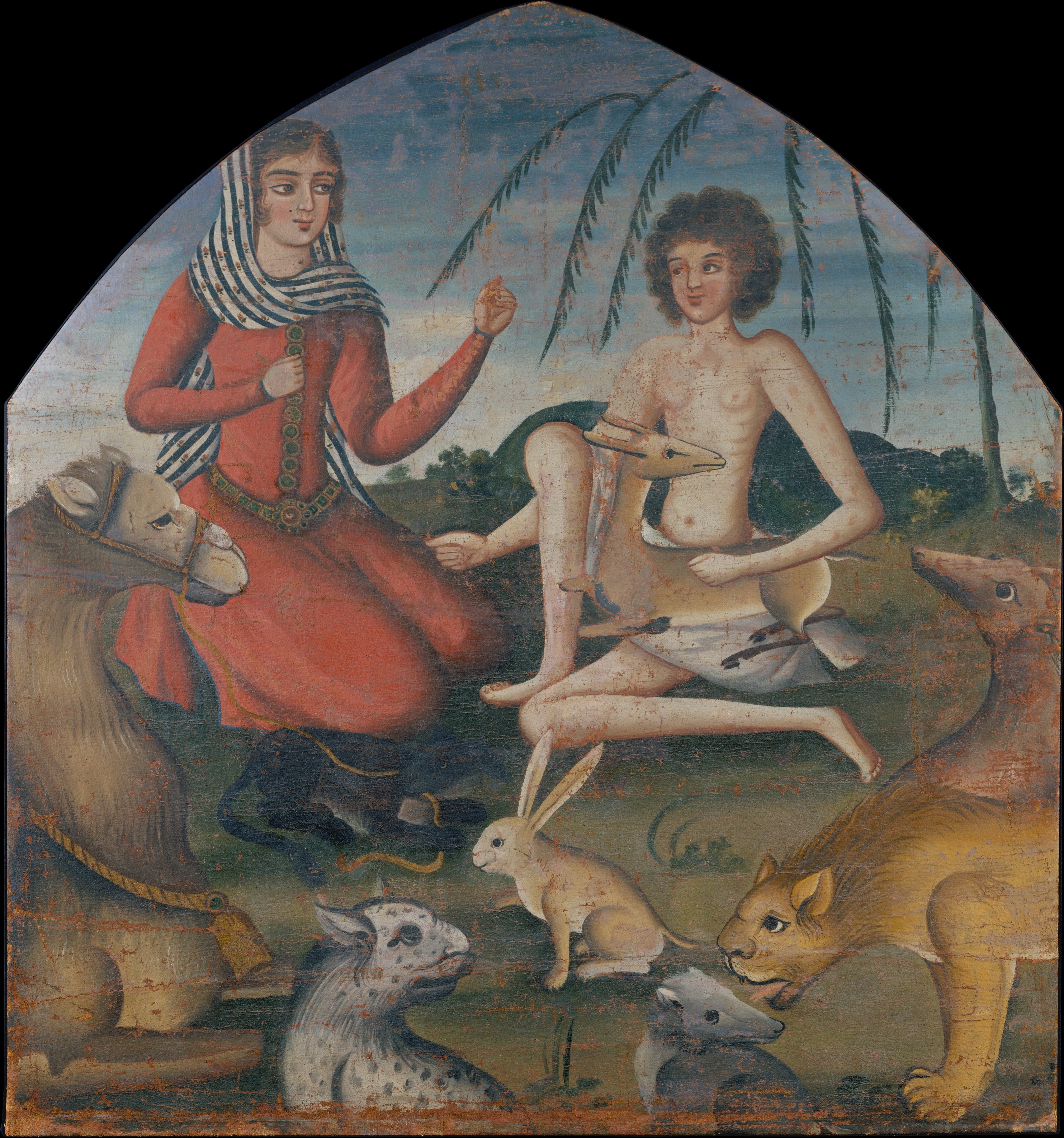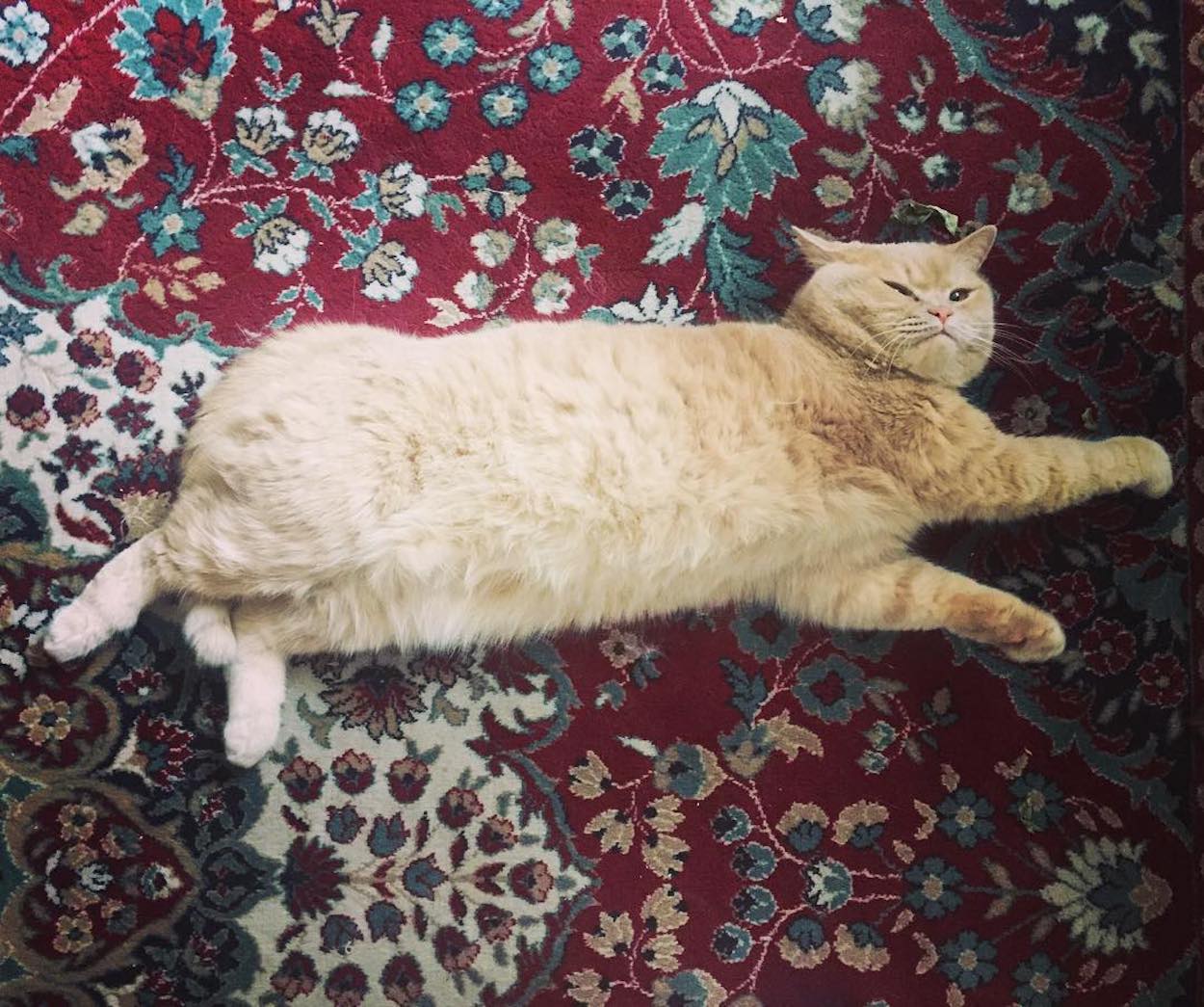It is believed that Qays ibn-al Mullawah was a poet in Bedouin Arabia in the 7th century. He was captivated by Laila al-Aamiriya, a wealthy girl who belonged to the same tribe. Although his love was reciprocated, Laila’s family did not approve of their union and forbade them from being together. Laila was soon married to another and remained a faithful wife (in some versions of the story she never consummated her marriage out of loyalty to her true beloved). Upon hearing of the marriage, a heartbroken Qays fled from his distraught parents and wandered the forest where he descended into madness. He spent his days and nights weeping for Laila and composing poetry, thus earning the epithet Majnun (one who is mad with love).
Though there are several renditions of the story in Arabic, Turkish, Indian, and Azerbaijani traditions, the legend of Laila and Majnun was popularized in the 12th century by the great Azerbaijan poet, Nizami Ganjavi.
Today's artwork features Laila visiting Majnun in the forest. Majnun is withered and shrunken as he will no longer eat and is surrounded by forest animals. It is believed that the animals showed Majnun great compassion and were his constant companions.
- Maya Tola
P.S. Mihrabs are little masterpieces of Islamic art. read more about them here!


 Unknown Artist
Unknown Artist